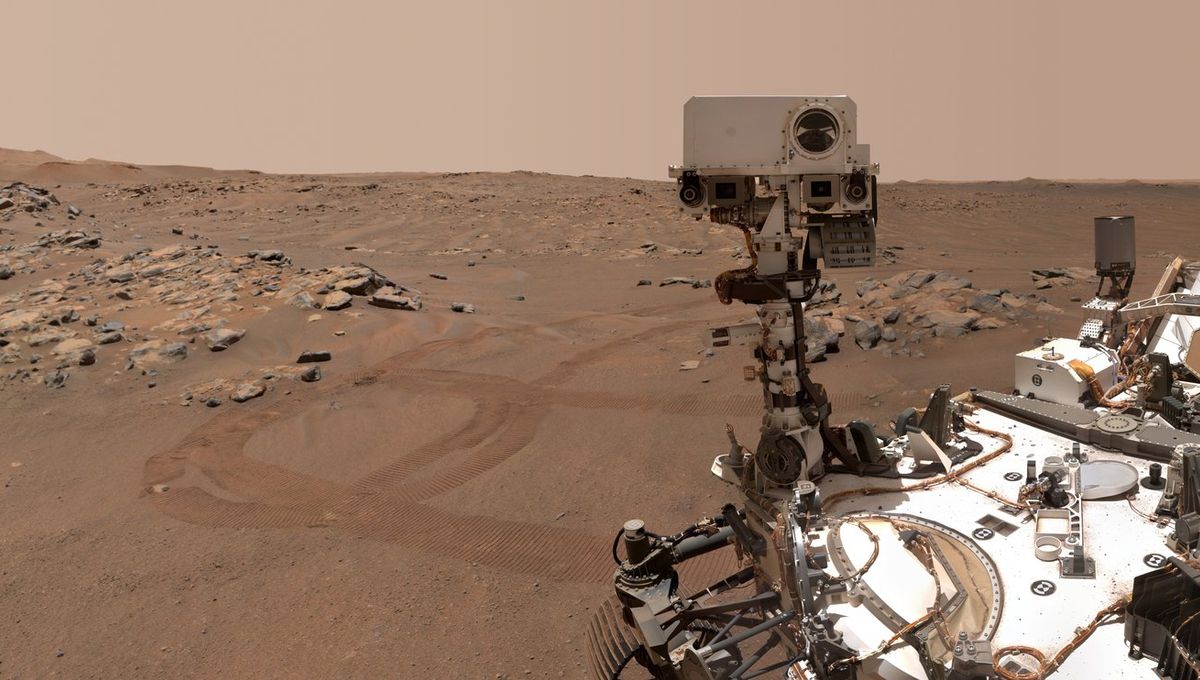
A few months ago, NASA announced that it had successfully produced oxygen on Mars for the first time. Now, detailed results from the experiment reveal that the Mars Oxygen In-Situ Resource Utilization Experiment (MOXIE) can produce oxygen reliably, having been tested seven times in different conditions, night and day, and across two Martian seasons.
As reported in Science Advances, the experiment was able to deliver 6 grams (0.2 ounces) of oxygen per hour, the rate of a fairly small tree on Earth. This might seem modest but it showed that the technology is capable of completing the ambitious task ahead.
“This is the first demonstration of actually using resources on the surface of another planetary body, and transforming them chemically into something that would be useful for a human mission,” MOXIE deputy principal investigator Jeffrey Hoffman, from the Massachusetts Institute of Technology, said in a statement. “It’s historic in that sense.
MOXIE is one of many instruments on Perseverance so it can’t run continuously as a full-scale version would. It takes hours to warm up and then get to work. Martian air is first filtered and then pressurized. The air is then sent through the Solid OXide Electrolyzer (SOXE), which breaks it into carbon monoxide and oxygen. This process goes on for an hour.
“The atmosphere of Mars is far more variable than Earth,” Hoffman noted. “The density of the air can vary by a factor of two through the year, and the temperature can vary by 100 degrees. One objective is to show we can run in all seasons.”
MOXIE has been shown to successfully produce oxygen under limiting conditions, during the fall and winter months, as well as at different times of day and night. The team hopes to test it in the spring and when the atmosphere changes quickly.
“The only thing we have not demonstrated is running at dawn or dusk, when the temperature is changing substantially,” added Michael Hecht, principal investigator of the MOXIE mission at MIT’s Haystack Observatory. “We do have an ace up our sleeve that will let us do that, and once we test that in the lab, we can reach that last milestone to show we can really run any time.”
The goal is to produce enough oxygen to not only be able to sustain several astronauts but to produce fuel for the Mars Ascent Vehicle, which will take the astronauts back to orbit, and then to Earth.
A scaled-up version of MOXIE, producing about 2 to 3 kilograms (4.5 to 6.5 pounds) of oxygen per hour, would produce enough oxygen for a crew of six arriving 26 months later. A very realistic scenario, supporting the feasibility of this approach.
“To support a human mission to Mars, we have to bring a lot of stuff from Earth, like computers, spacesuits, and habitats,” Hoffman said. “But dumb old oxygen? If you can make it there, go for it – you’re way ahead of the game.”
The team looks forward to testing MOXIE in spring. With higher air density, they plan to push the device to the limit and see just how much oxygen it can produce.
Source Link: We Can Make Oxygen On Mars So Reliably That It Will Sustain Human Exploration